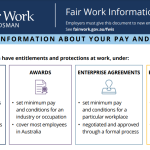
If the bank won’t loan you money for your start up, don’t lose heart – get creative; there are several other options.
If you’ve recently completed our Small Business Management course, written your business plan (and had it reviewed) and feel ready to take the plunge and secure finance for your start-up, getting a bank loan might seem like the logical option, but sometimes it’s not.
Getting Creative for Finance — Besides the Banks
Banks don’t really benefit all that much from financing a start-up, but they certainly take all the risk if it goes south. Not surprisingly, then, they’re often reluctant to approve loans for start-ups that aren’t already turning a sufficient, albeit small, profit.
But if you need finance so you can buy inventory or to fund product development before you can start turning a profit, chances are you banks might be unwilling to consider you for a loan. That doesn’t mean your business dreams are over, however.
6 Ways to Get Finance for Your Start Up
It just means you need to get creative with your funding options. So we’ve put together a list of six ways you can get creative with your start-up funding options:
- Finance it yourself: Remember when you bought your first car? Remember parting with the few thousand dollars you’d cobbled together from your part-time job stacking shelves at Coles, and then being handed the keys to your very own Ford Laser, Datsun or Honda Civic? If you financed your first car, why wouldn’t you finance your first business? It’s that simple.
- Get a personal loan: Getting a personal loan is relatively easy and it also allows you the freedom to spend the money how you see fit, just so long as you make the minimum repayments.
- Apply for government funding: The Australian Government funnels about $3.5 billion into grants and funding for start-ups every year. There are many grants available across a range of industries and can provide between 50 and 80 percent of the cash required for a business initiative.
- Crowdfunding: If it’s good enough for Zach Braff, it could work for you, too. Use a crowdfunding site like Fundable to find a group of like-minded people to support your venture.
- Vendor financing: If you need stock to sell, many manufacturers and distributors will defer payment until the goods are sold by you — or returned without charge.
- Try a start-up incubator: A start-up incubator like Pollenizer puts wannabe entrepreneurs and their business ideas through a kind of Start-Up Bootcamp; looking at the idea from every angle and testing it to ensure it’s a viable business idea. And if you make it to the finish line, you’re almost a guaranteed success. Start-up incubators like Pollenizer are a great way for entrepreneurs to gain access to the knowledge and resources of experts in their field.
***
There’s also the less creative, more traditional route of securing Angel and venture capital investing, but for new entrepreneurs who have little previous experience behind them, these sources aren’t always interested in the risky, early stage financing.
If you need financing to give your start up lift-off, get creative.




















